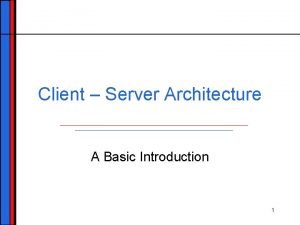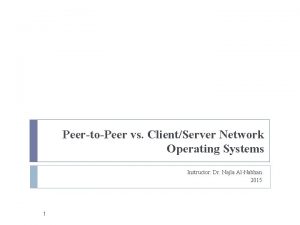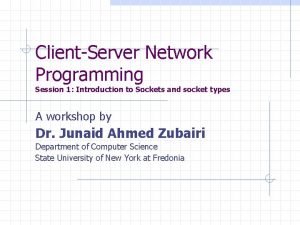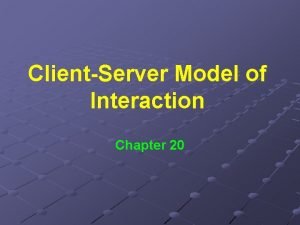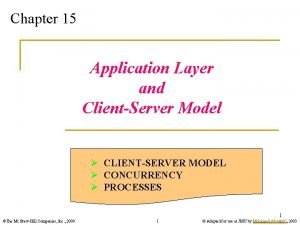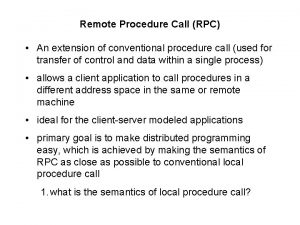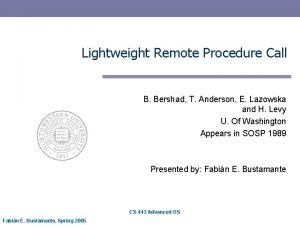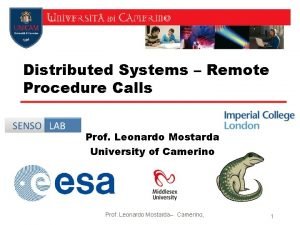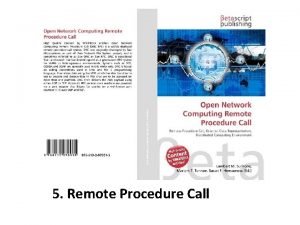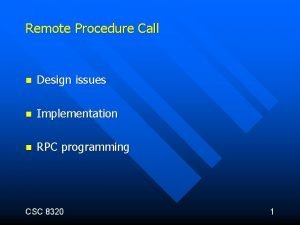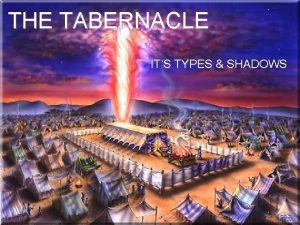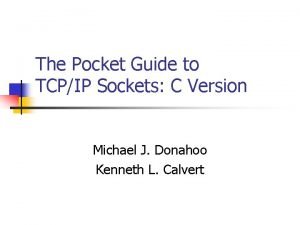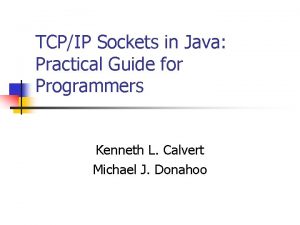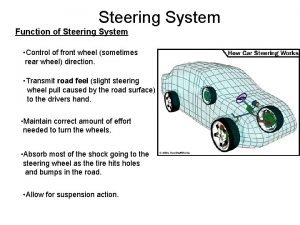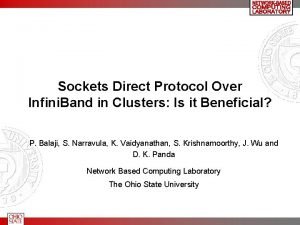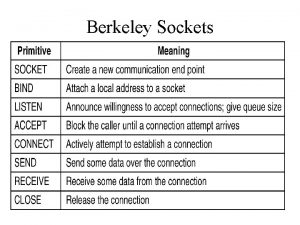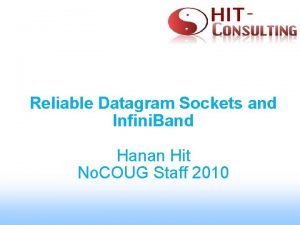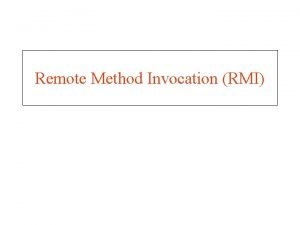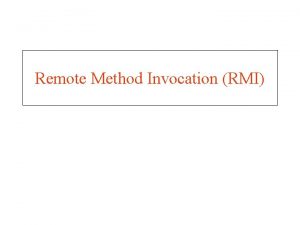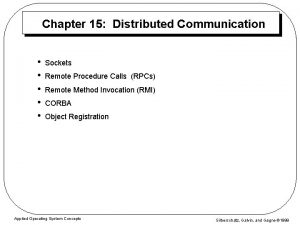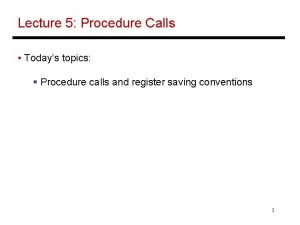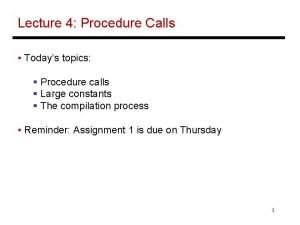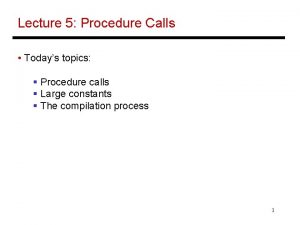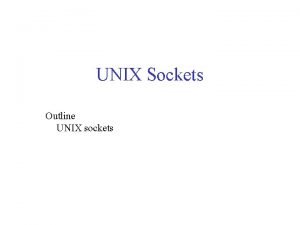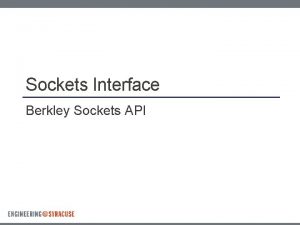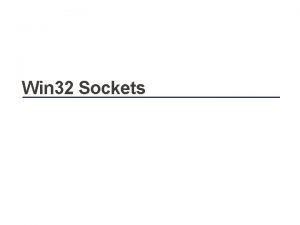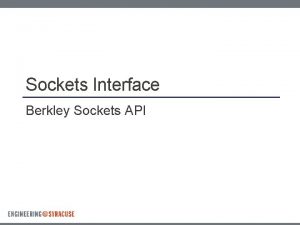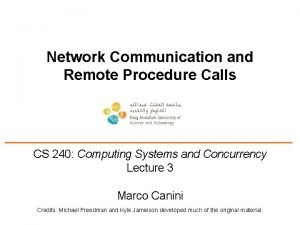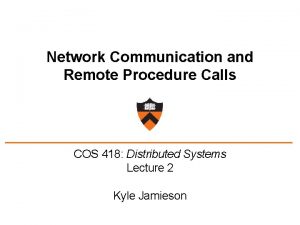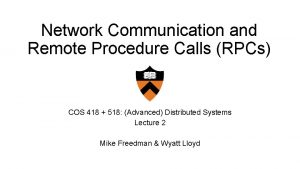ClientServer Communication n Sockets Remote Procedure Calls Remote


















- Slides: 18

Client-Server Communication n Sockets Remote Procedure Calls Remote Method Invocation (Java)

Sockets n n n A socket is defined as an endpoint for communication Concatenation of IP address and port The socket 161. 25. 19. 8: 1625 refers to port 1625 on host 161. 25. 19. 8 Communication consists between a pair of sockets Low level: Sends/receives a stream of bytes. Sockets are either connection-oriented (i. e. , TCP) or connectionless (i. e. , UDP).

Socket Communication

Remote Procedure Calls n n Remote procedure call (RPC) abstracts procedure calls between processes on networked systems. Stubs – client-side proxy for the actual procedure on the server. The client-side stub locates the server and marshalls the parameters. The server-side stub receives this message, unpacks the marshalled parameters, and performs the procedure on the server. n Returns output of procedure (if applicable).

Remote Method Invocation n Remote Method Invocation (RMI) is a Java mechanism similar to RPCs. RMI allows a Java program on one machine to invoke a method on a remote object. Can send objects to remote JVM

Single and Multithreaded Processes

Benefits n n Responsiveness (e. g. , Web server). Resource Sharing (several threads of control within a common address space). Economy (threads are often termed lightweight processes). Much cheaper to create and manage. Utilization of MP Architectures

User vs Kernel Threads n User Threads: n n n Thread management done by user-level threads library. When one thread blocks, the process blocks. Kernel Threads: n n n Supported by the kernel. When one thread blocks the OS can pick another thread within the same process to execute. Allows overlapping of (for example) computation and I/O requests.

Kernel Threads n Examples n n n Windows XP/2000 Solaris Linux Tru 64 UNIX Mac OS X

Multithreading Models n Many-to-One n One-to-One n Many-to-Many

Many-to-One n n n Many user-level threads mapped to single kernel thread. Possible to overlap I/O computation? Examples: n Solaris Green Threads n GNU Portable Threads

Many-to-One Model

One-to-One n n Each user-level thread maps to kernel thread Examples n n n Windows NT/XP/2000 Linux Solaris 9 and later

One-to-one Model

Many-to-Many Model n n Allows many user level threads to be mapped to many kernel threads Allows the operating system to create a sufficient number of kernel threads Solaris prior to version 9 Windows NT/2000 with the Thread. Fiber package

Many-to-Many Model

Two-level Model n n Similar to M: M, except that it allows a user thread to be bound to kernel thread Examples n n IRIX HP-UX Tru 64 UNIX Solaris 8 and earlier

Two-level Model
 Components of client server application
Components of client server application Clientserver network
Clientserver network Clientserver network
Clientserver network Clientserver model
Clientserver model Clientserver model
Clientserver model Remote procedure call diagram
Remote procedure call diagram Lightweight remote procedure call
Lightweight remote procedure call Remote procedure call middleware
Remote procedure call middleware Remote procedure call c++
Remote procedure call c++ Design issues of rpc
Design issues of rpc Remote procedure call architecture
Remote procedure call architecture Censer
Censer Tcp ip sockets in c
Tcp ip sockets in c Tcp/ip sockets in java
Tcp/ip sockets in java Parts of steering wheel
Parts of steering wheel Infini band
Infini band Socket primitives for tcp
Socket primitives for tcp Reliable datagram sockets
Reliable datagram sockets Unix network programming stevens
Unix network programming stevens
